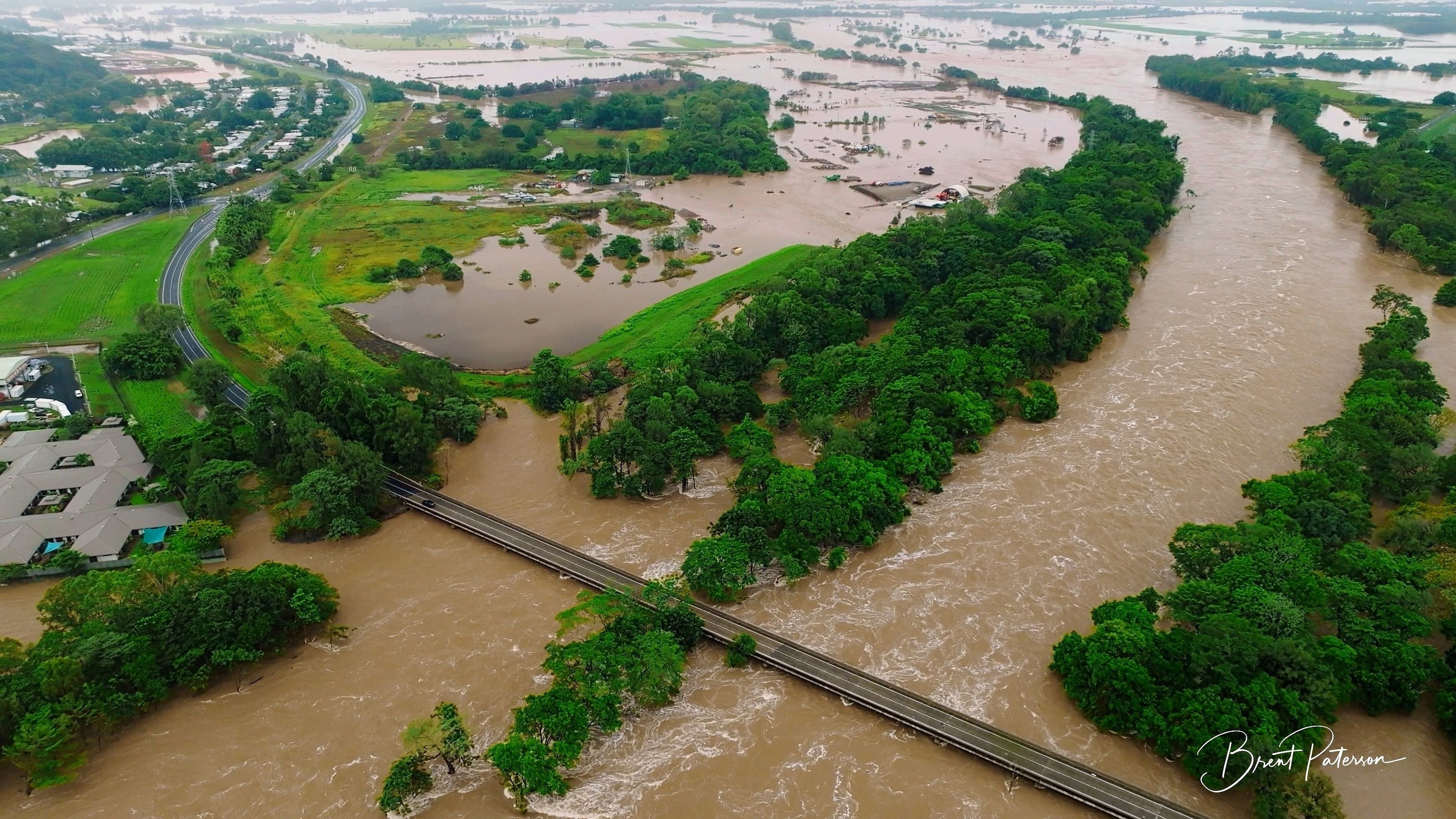
An aerial view shows flooding caused by heavy rains and water gushing through the Barron River, in Cairns, Queensland, Australia December 18, 2023.
Credit: Reuters Photo
Sydney: Heavy rain from a coastal trough linked to ex-Tropical Cyclone Jasper on Monday cut off several tourist towns in Australia's northeast along the Great Barrier Reef, forcing evacuations as some residents fled to rooftops to escape fast-rising rivers.
Jasper lashed the far north regions of Queensland state last week leaving a trail of destruction before getting downgraded to a tropical low, bringing months' worth of rain within a few hours over the weekend, official data showed.
"We see a lot of natural disasters and this is just about the worst I can remember," Queensland state Premier Steven Miles told ABC television. "The problem is rain won't stop and until it eases up, we can't get aerial support into remote places."
Cairns, the gateway town to the Great Barrier Reef and home to more than 150,000 people, received around 600 mm (24 inches) of rain over 40 hours through early Monday morning. That is more than triple the December mean of 182 mm (7.17 inches).
All flights from Cairns airport was cancelled or postponed on Monday with footage on social media showing planes partially submerged on the tarmac.
Water pumps have been draining water since Sunday but "it's still not keeping up with the volume of water that came in," Cairns Airport CEO Richard Barker told Sky News.
A crocodile was spotted in a swollen drain in the town of Ingham, about 250 km (155 miles) south of Cairns, and authorities warned residents not to swim in flood waters.
Dan, a resident just north of Cairns Airport, told ABC Radio he had to shelter on top of his kitchen bench for around four hours before being taken to a house where 30 people were waiting on the roof as they waited for rescue boats.
"Kids, elderly people, dogs and cats on this poor bloke's roof who just had brand new solar panels installed ... it was a very harrowing journey navigating the very fast-flowing water and dodging debris," he said.
El Nino Influence
The weather bureau has forecast more rain as Jasper is likely to hover through Monday with some regions expected to pick up 300 mm of rain in under six hours. Major flood warnings have been issued with rivers set to break records set in 1977.
More than 14,000 properties across the region are still without power.
Prime Minister Anthony Albanese said Australian defence forces had been put on standby for rescue and relief efforts.
Australia is now enduring an El Nino phenomenon, which can provoke extreme weather phenomena from wildfires to tropical cyclones and prolonged droughts.
As Australia's northeast battles floods, the southeast, in contrast, is on bushfire alert with temperatures expected to top 40 degrees Celsius (104°F) on Tuesday in some Sydney suburbs.